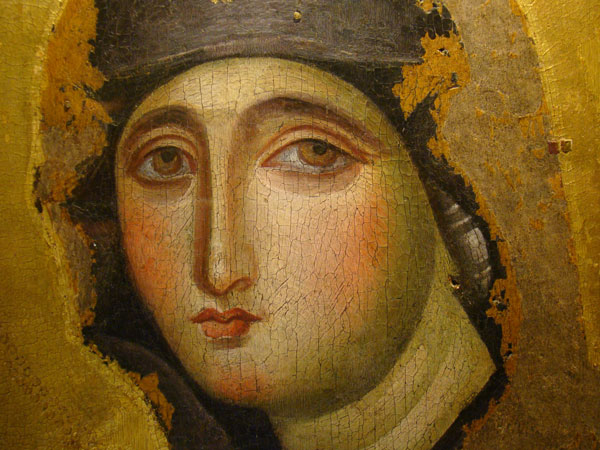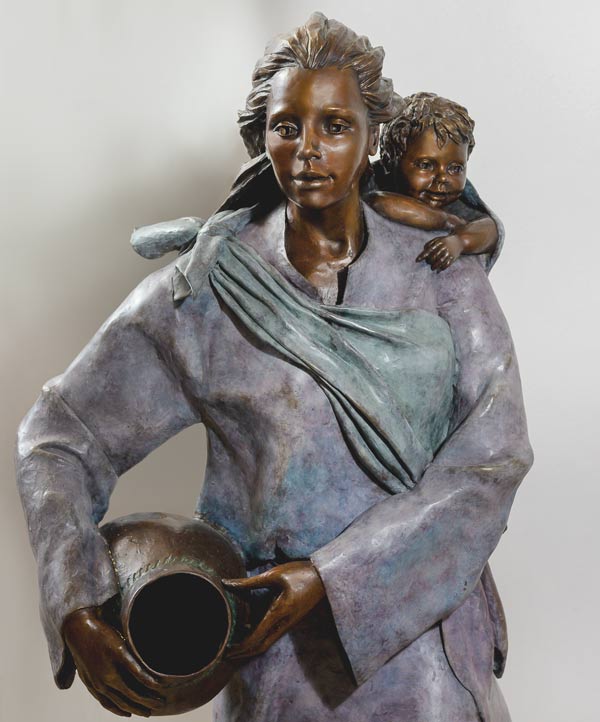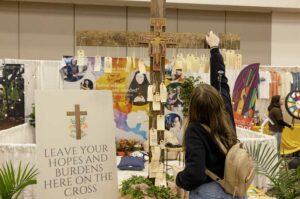
Possibly the oldest known image of Mary the mother of God is said to have been painted by St. Luke himself, in the upper room during the Pentecost, using hot wax and resin. In 1221, during a period of iconoclasm in Constantinople that destroyed the church where it was formerly located, a barefoot St. Dominic carried this icon in his arms and entrusted it to a community of cloistered nuns. They have safeguarded it ever since — in San Sisto until 1575, and then in the Church of Santa Maria del Rosario, on the highest hill in Rome. To this day, visitors ask the Blessed Mother to intercede for them, as only Mary can. In her radical role as Mother of the Church, she is Maria Advocata, Advocata Nostra — one who defends or champions another’s cause.
As Felician Sisters of North America, we recently resolved to “identify the prophets among us who, in sharing their stories, challenge us to live the gospel more radically.” Our first and best example is of course, Mary, the premiere New Testament prophet who proclaims the Lord’s coming. Mary exemplifies what it means to be a radical woman. Felician Sisters and their ministries follow Mary’s radical lead.

How can we call Mary radical? In our present political climate, the word usually refers to an extremist. However, the first and original meaning understands radical as going to the root or focusing on what is fundamental. At the root of her being, Mary was turned toward God. In response to the Archangel Gabriel’s invitation that she become mother to a son who would be called holy, the Son of God, Mary said “yes” because she had a radical relationship with God. Because of her “yes,” we have a Gospel, the Good News of Jesus Christ, to proclaim to the world.
After the visit from Gabriel, Mary goes to visit her cousin Elizabeth, who is pregnant with John the Baptist. As the scene of their initial encounter unfolds, Luke places on Mary’s lips her canticle, in Latin called the Magnificat. In that song, Mary proclaims the Good News to Elizabeth: God’s mercy is for those who fear him from generation to generation (Lk 1:50). Mary names that mercy by pointing to a series of reversals — God has brought down the powerful and lifted up the lowly (1:52); God has filled the hungry with good things and sent the rich away empty (1:53). Clearly, Mary’s words are prophetic. She names what God is doing in the lives of God’s people. That God to whom she will give birth is about to turn the world upside down. Out of her radical relationship with God, Mary proclaims that our God is a God of surprises and reversals.
It is easy to forget the radical nature of Mary’s relationship with God and the prophetic stance which she took after the life-changing visit from Gabriel and the overshadowing of the Holy Spirit. Some religious art portrays Mary not as a radical prophet, but as a sweet and gentle young woman wistfully gazing upon her son. Yet the true nature of Mary’s discipleship might be better served by portraying her as a gutsy woman, bold and passionate about her son’s message for the life of the world.
We Felician Sisters claim Mary, radical Gospel woman, as our role model. Like her, we have committed ourselves to living the Gospel radically by our commitment to go wherever there is a need and trusting in the guidance of the Holy Spirit when the path forward is not always clear. All who support our efforts and walk the path with us can do the same. Alone the challenge is daunting. Together, empowered by trust and hope, we can say with Mary: “Be it done to me according to your will.”




